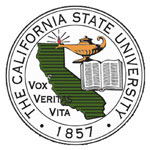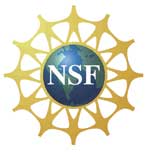Penn State University
The Physics Department at Penn State has a long-standing REU program which is open to all fields of physics and over 20 different research labs. The research topics at Penn State are focused primarily in two main topics: Multi-messenger Particle Astrophysics and Condensed Matter Physics.
Research in Multimessenger Astrophysics
The Pennsylvania State University, in University Park, PA, is a premier site for multi-messenger astrophysics, the study of astrophysics that uses the combined information neutrinos, photons, charged particles, and gravitational waves to create a deeper understanding of complex astrophysical phenomena. Astrophysicists in the Particle Astrophysics group, the Center for Multi-messenger Astrophysics, and the Institute for Gravitation and the Cosmos at Penn State use the rich information offered by all four messengers to paint a coherent picture of the non-thermal universe. Many different projects are available across this field of research through the Penn State Physics REU. Three labs in particular will host Cal-Bridge Summer students, and there may be additional funding for research in other areas of multi-messenger astrophysics in the Institute for Gravitation and the Cosmos.
Experimental Research on Neutrinos is hosted in Prof. Stephanie Wissel’s lab. Neutrinos are exciting to study as they offer a unique window into the universe, because they interact solely through the weak force, such that they can be used to probe extreme conditions throughout the universe and to test physics at energies beyond the standard models. Projects will focus on working one of two new neutrino telescopes, either the called the Beamforming Elevated Array for Cosmic Neutrinos (BEACON) or the Radio Neutrino Observatory in Greenland (RNO-G). BEACON uses an array of radio-frequency antennas trained on the horizon, to search for radio emission from showers produced after a tau neutrino interacts in the Earth. RNO-G will be the largest neutrino telescope in the world when it is completed. It places antennas in the ice in Greenland and searches for neutrino interactions there-in.
Possible projects include from:
- Building and testing novel antennas for RNO-G
- Test stand for surveying station locations at RNO-G
- Instrumentation assembly and testing for RNO-G
- Air shower and radio wave propagation modeling for BEACON
- Measure air shower energies and arrival directions with BEACON
- Build and test an autonomous power and networking station design for BEACON
- Model cosmic ray propagation and associated neutrino production
Some projects are more focused on simulations and analysis, while others are more focused on hands-on work in the lab.
Research in Multimessenger Astrophysics theory will be with Prof. David Radice and Prof. Kohta Murase and will focus on the modeling of the high-energy emission from colliding neutron stars. The group of Prof. Radice performs general relativistic simulations of merging neutron stars, while the group of Prof. Murase studies the production and acceleration of cosmic rays and high-energy photons and neutrinos from these cataclysmic events.
Possible projects include:
- Study the magnetic field topology produced in neutron star mergers
- Study of the motion of matter in the remnant disk due to convection and magnetic stresses
- Implementation of Lagrangian tracer particles in the simulation code
- Production of synthetic observations of high-energy photons from a population of binary mergers
All projects involve a combination of code development, either in the simulation framework or as stand-alone postprocessing scripts, and analysis and interpretation of simulation output.
Research in Consensed Matter and other topics
Penn State is a premier site for Materials Science related research. In physics this is most notably focused in the field known as Condensed Matter. In condensed matter, research projects cover a wide range of physics studying quantum mechanical, electrical, magnetic, optical and physical properties of materials.The REU also has occasional projects in atomic, molecular and optical physics (AMO), Biophysics, Condensed Matter, Materials Science, Soft Matter, Gravitational Physics, High energy theory, Particle Astrophysics, and some Cosmology projects. Research projects vary from year to year, and can be computational, theoretical or experimental. For more information about possible projects please visit the REU website.
Some example research topics in the past have included studying 2-dimensional (2D) layered materials, nano-ribbons, q-bits, active matter, material memory, semiconductors and photonic crystals. Many projects involve creating, simulating or testing nano-structured materials to learn about and document new exciting electrical, optical, and magnetic physics.
Program Details
What is it?
Penn State hopes to recruit at least four Cal-Bridge summer students who will work full time for 10 weeks in the summer on a project within two main subfields, Particle Astrophysics or Condensed Matter with over 20 possible faculty.
Participants in all research projects will be embedded in the Penn State Physics REU, through which they will receive mentoring support, meet other summer interns, engage the public through outreach activities, and receive professional development training. At the end of the summer, you will present your work to other students and Penn State researchers at a research symposium.
Selected students will receive a $7000 stipend for 10 weeks of research. Importantly this is a full-time job and you will have the opportunity to focus fully on research without the stress of coursework. In addition, participants will be provided with housing and each student will receive up to $600 toward travel expenses. The program dates for the summer of 2024 are from May 27 to August 2, 2024, inclusive. It may be possible to arrange alternative dates.
Who should apply?
Applicants must be United States Citizens or Permanent Residents and at least 18 years of age by the beginning of the program. Applicants must be enrolled at a CSU or California Community College at the time of their application. Participants may not have graduated from their 4-year institution before the beginning of the summer internship, but community college students may be in the process of transferring to a 4-year institution.
When and how to apply?
Applications are due February 1, 2024. To apply to the program, go to the Application Home Page. In addition, you must ask two faculty members (or others familiar with your academic or work background) to submit letters of reference. Indicate their names, addresses, phone numbers, and e-mail addresses in your on-line application where appropriate.


This material is based upon work supported by the National Science Foundation under Grants DUE-1741863, AST-1636646, and AST-1836019.